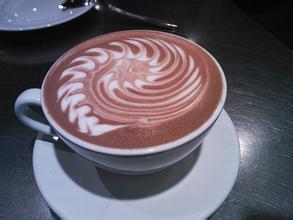A very exquisite and clear introduction to the flavor and taste of Tianyi Manor Coffee production area
China Coffee Network
Sandino National Liberation Front: the ruling party. Established on July 23, 1961, mainly composed of workers, farmers and intellectuals, it waged a long armed struggle to overthrow the military dictatorship of Somoza. He was in power from July 1979 to April 1990. He won the general election in November 2006 and returned to power after 16 years of loss of power. Won again in the general election in November 2011 and remained in power. General Secretary Daniel Ortega, the current president.
Independent Liberal Party: opposition party. Founded in 1944, it is mainly composed of members of the Liberal nationalist Party who are dissatisfied with the Somoza family. In November 2011, his candidate Gadya took part in the presidential election, ranking second with 31.13% of the vote. Chairman Educardo Montealegre.
Constitutional Liberal Party: opposition party. He took office for the first time in 1996. Won again in the general election in November 2001. Lost the general election in November 2006. The current chairman, Maria Ayd Osuna (female), General Secretary Miguel Rosales Ortega.
Nicaraguan Freedom Union: opposition party. Founded in 2006 by former Interior Minister Montealegre, it is mainly composed of members of the Constitutional Liberal Party who are dissatisfied with Alemann's alliance with SPLF. In November 2006, his candidate Montealegre took part in the presidential election, ranking second with 28% of the vote.
Sandino Reform Movement: opposition party, founded on 18 May 1995. It is mainly composed of some cadres, intellectuals and artists separated from the Sang Jiefang, and advocates the maintenance of social democracy, legal system, and fairness. Chairman Enrique Saenz
Nicaraguan coffee has a wide range of flavor properties. Some coffee has a high alcohol thickness like Mexican coffee, while others have bright acidity like African coffee. Most of the varieties used in Nicaraguan coffee are traditional Tibica, and a few varieties of bourbon and Kaddura are grown.
Generally speaking, Nicaraguan coffee is characterized by calmness but without losing its flavor. Both Full city and Viennese are good choices when baking Nicaraguan coffee. Medium and deep roasting will bring mellow bitterness and excellent balance to Nicaraguan coffee.
Nicaragua Shangri-La Esperanza
Producing country: Nicaragua
Grade: SHG
Planting area: Sinotega
Brand name: Shangri-La Esperanza
Treatment method: wet treatment and solarization
Appearance: 0dplash 300grgrgrgr17-18SCR
Variety: Kaddura
Note: the dry aroma is full of chocolate, accompanied by hazelnut and cocoa aromas. The wet aroma also has the smell of chocolate, accompanied by the smell of orange peel. With the baking degree of city+, the bright lemon acid and long cocoa finish are wonderful.
Dry aroma (1-5): 3.8
Wet aroma (1-5): 3.8
Acidity (brightness) (1-10): 8.9
Taste (layered) (1-10): 8.8
Palate (alcohol thickness) (1-5): 3.4
Aftertaste (residue) (1-10): 8.9
Balance (1-5): 2
Basic score (50): 50
Total score (maximum 100): 89.6
Strength / main attributes: medium strength / clear chocolate flavor with citrus and spice embellishment
Recommended baking degree: full city
Contrast: very delicate, clear, clear Nicaraguan coffee

Important Notice :
前街咖啡 FrontStreet Coffee has moved to new addredd:
FrontStreet Coffee Address: 315,Donghua East Road,GuangZhou
Tel:020 38364473
- Prev

Introduction to the flavor and taste of Mercedes Manor Coffee with moderate granules and very fragrant flavor
The excellent Nicaraguan coffee is among the highest in the world, it is mild and delicious, moderate granule, very fragrant. In many countries, coffee production has been seriously affected for political reasons. Nicaraguan coffee industry is no exception. The 1979 revolution forced coffee planters to flee to Miami. It was followed by a period of uncertainty, and the government considered whether to re-divide it.
- Next

Introduction to the flavor and taste characteristics of Ethiopian coffee manor with fragrant and mellow smell
Ethiopian coffee beans grow in close to the natural environment. After years of planting under the same growth conditions, Ethiopian coffee beans have gradually adapted to the environment here. More than 60% of coffee beans are grown in forests or semi-forests. Large-scale coffee-growing villages account for about 35% of the country's total coffee production.
Related
- Does Rose Summer choose Blue, Green or Red? Detailed explanation of Rose Summer Coffee plots and Classification in Panamanian Jade Manor
- What is the difference between the origin, producing area, processing plant, cooperative and manor of coffee beans?
- How fine does the espresso powder fit? how to grind the espresso?
- Sca coffee roasting degree color card coffee roasting degree 8 roasting color values what do you mean?
- The practice of lattes: how to make lattes at home
- Introduction to Indonesian Fine Coffee beans-- Java Coffee producing area of Indonesian Arabica Coffee
- How much will the flavor of light and medium roasted rose summer be expressed? What baking level is rose summer suitable for?
- Introduction to the characteristics of washing, sun-drying or wet-planing coffee commonly used in Mantenin, Indonesia
- Price characteristics of Arabica Coffee Bean Starbucks introduction to Manning Coffee Bean Taste producing area Variety Manor
- What is the authentic Yega flavor? What are the flavor characteristics of the really excellent Yejasuffi coffee beans?

